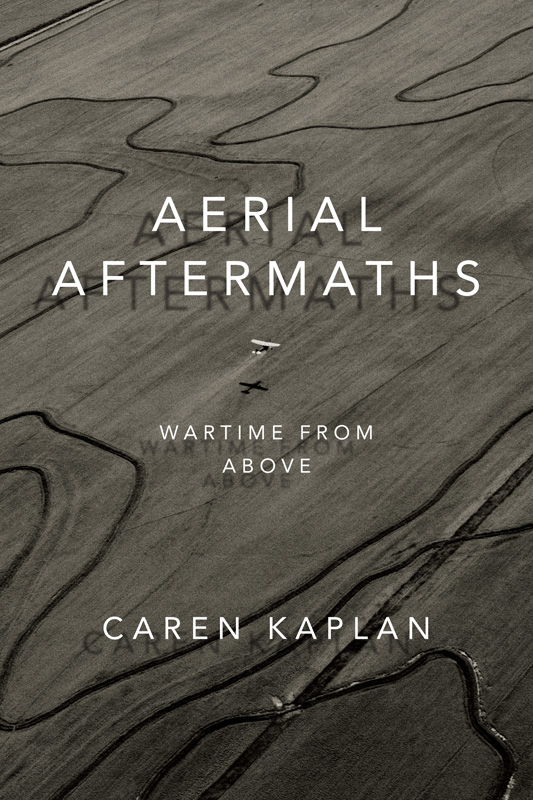Caren Kaplan: Aerial Aftermaths: Wartime from Above (2018)
Filed under book | Tags: · aesthetics, air, cartography, colonialism, geography, history of photography, infrastructure, knowledge, landscape, mapping, military, nature, panorama, photography, power, space, technology, war

“From the first vistas provided by flight in balloons in the eighteenth century to the most recent sensing operations performed by military drones, the history of aerial imagery has marked the transformation of how people perceived their world, better understood their past, and imagined their future. In Aerial Aftermaths Caren Kaplan traces this cultural history, showing how aerial views operate as a form of world-making tied to the times and places of war. Kaplan’s investigation of the aerial arts of war—painting, photography, and digital imaging—range from England’s surveys of Scotland following the defeat of the 1746 Jacobite rebellion and early twentieth-century photographic mapping of Iraq to images taken in the immediate aftermath of 9/11. Throughout, Kaplan foregrounds aerial imagery’s importance to modern visual culture and its ability to enforce colonial power, demonstrating both the destructive force and the potential for political connection that come with viewing from above.”
Publisher Duke University Press, Durham, 2018
Next Wave: New Directions in Women’s Studies series
ISBN 9780822370086, 0822370085
xiv+298 pages
via André
Donna Haraway Reads The National Geographic on Primates (1987)
Filed under video | Tags: · animal, feminism, nature
“How does the ‘cultured’ gorilla, i.e. Koko, come to represent universal man? Author and cultural critic Donna Haraway untangles the web of meanings, tracing what gets to count as nature, for whom and when, and how much it costs to produce nature at a particular moment in history for a particular group of people. A feminist journey through the anthropological junglescape.”
Originally broadcasted on Paper Tiger Television in 1987.
The video was posted on the website of Paper Tiger TV in May 2017 under Creative Commons BY-NC-ND License.
MP4 (357 MB)
Comment (0)Maja Fowkes: The Green Bloc: Neo-Avant-Garde Art and Ecology Under Socialism (2015)
Filed under book | Tags: · art history, central europe, communism, conceptual art, east-central europe, eastern europe, ecology, environment, land art, nature, neo-avant-garde, performance, performance art, socialism, yugoslavia

“Expanding the horizon of established accounts of Central European art under socialism, The Green Bloc uncovers the neglected history of artistic engagement with the natural environment in the Eastern Bloc. Focussing on artists and artist groups whose ecological dimension has rarely been considered, including the Pécs Workshop from Hungary, OHO in Slovenia, TOK in Croatia, Rudolf Sikora in Slovakia, and the Czech artist Petr Štembera, Maja Fowkes’s innovative research brings to light an array of distinctive approaches to nature, from attempts to raise environmental awareness among socialist citizens to the exploration of non-anthropocentric positions and the quest for cosmological existence in the midst of red ideology. Embedding artistic production in social, political, and environmental histories of the region, this book reveals the artists’ sophisticated relationship to nature, at the precise moment when ecological crisis was first apprehended on a planetary scale. ”
Publisher Central European University Press, New York and Budapest, 2015
ISBN 9789633860687, 9633860687
viii+299 pages
via Memory of the World
Reviews: Katalin Cseh-Varga (Springerin, 2015, DE), Juliane Debeusscher (Critique d’art, 2018).
PDF (32 MB)
Comment (0)
